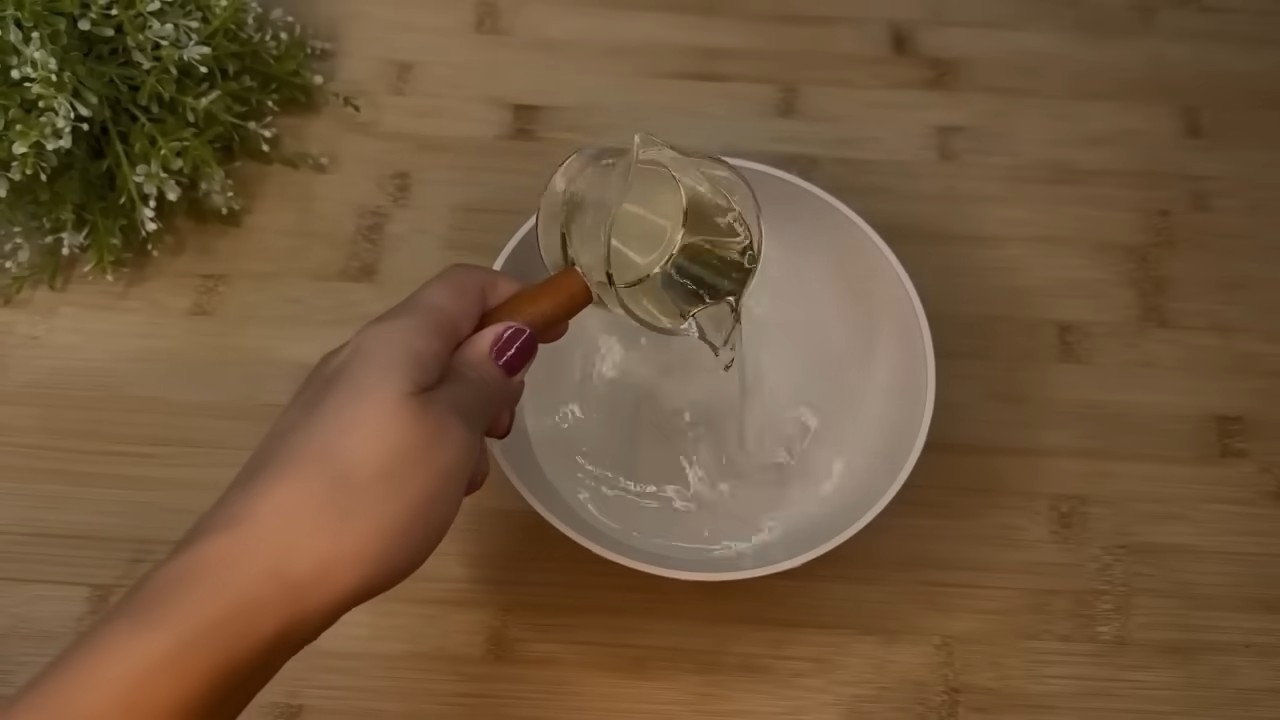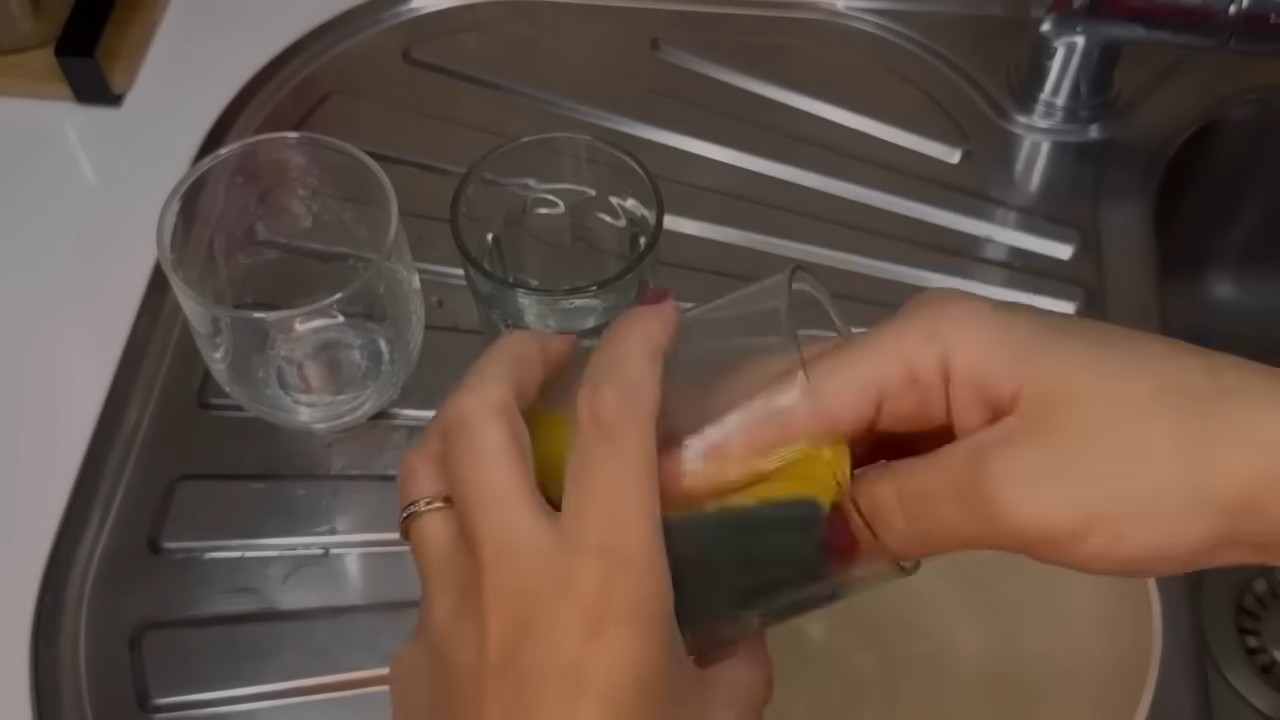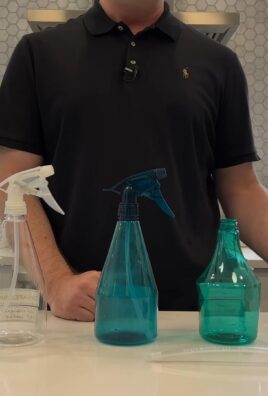Vinegar and Salt Cleaning Hacks: Ever feel like you’re battling grime with an arsenal of expensive, chemical-laden cleaners? I know I have! But what if I told you the secret to sparkling clean surfaces has been hiding in your pantry all along? For generations, our grandmothers relied on simple, natural ingredients to keep their homes spotless, and two of the most powerful are vinegar and salt.
These aren’t just kitchen staples; they’re a dynamic cleaning duo! Think of it as a time-tested tradition, passed down through families who understood the power of resourcefulness. In many cultures, vinegar was even used medicinally and as a preservative, highlighting its incredible versatility. Today, we’re rediscovering these age-old secrets, not just for their effectiveness, but also for their eco-friendliness and cost-saving benefits.
Why should you embrace these vinegar and salt cleaning hacks? Because they’re incredibly effective at tackling everything from stubborn stains to mineral buildup. Plus, they’re a fantastic alternative to harsh chemicals that can irritate your skin and harm the environment. I’m excited to share some of my favorite DIY cleaning recipes using these two simple ingredients, so you can ditch the expensive cleaners and create a healthier, happier home!

DIY Cleaning Powerhouse: Vinegar and Salt Hacks That Will Blow Your Mind!
Okay, friends, let’s talk cleaning. I know, not the most glamorous topic, but trust me, these vinegar and salt hacks are game-changers. We’re talking cheap, effective, and surprisingly satisfying cleaning solutions that you can whip up with ingredients you probably already have in your pantry. Forget those expensive, chemical-laden cleaners – let’s get natural and get cleaning!
Why Vinegar and Salt? The Dynamic Duo
Before we dive into the nitty-gritty, let’s quickly chat about why vinegar and salt are such a powerful cleaning combo.
* Vinegar: This acidic superstar is a natural disinfectant, deodorizer, and degreaser. It’s fantastic for cutting through grime, dissolving hard water stains, and killing bacteria. Just remember to use white distilled vinegar for cleaning purposes.
* Salt: Abrasive yet gentle, salt acts as a scrubbing agent, helping to loosen stubborn dirt and grime. It also has some disinfecting properties and can absorb odors.
Together, they create a cleaning force to be reckoned with!
Hack 1: Sparkling Clean Showerhead
Hard water got your showerhead looking crusty? Don’t worry, we can fix that! This hack is super easy and will have your showerhead spraying like new in no time.
What you’ll need:
* White distilled vinegar
* Salt
* A plastic bag (sandwich bag or larger, depending on your showerhead size)
* Rubber band or twist tie
Step-by-step instructions:
1. Mix your cleaning solution: In the plastic bag, combine about 1 cup of white distilled vinegar with 2 tablespoons of salt. Give it a good swirl to dissolve the salt as much as possible. Don’t worry if it doesn’t completely dissolve; the vinegar will do most of the work.
2. Submerge the showerhead: Carefully attach the bag to your showerhead, ensuring that the showerhead is fully submerged in the vinegar and salt solution. Use the rubber band or twist tie to secure the bag tightly around the showerhead neck.
3. Let it soak: This is the key! Let the showerhead soak in the solution for at least 2-3 hours, or even overnight for really stubborn buildup. The longer it soaks, the better the results.
4. Remove and rinse: After soaking, remove the bag and discard the solution. Turn on the shower and let the water run for a few minutes to flush out any remaining vinegar and salt.
5. Wipe clean: Use a clean cloth or sponge to wipe away any remaining residue. You should see a noticeable difference in the cleanliness and water pressure of your showerhead!
Hack 2: Revive Your Grout
Grungy grout can make even the cleanest bathroom look dingy. This vinegar and salt paste will help you tackle those stubborn stains and bring your grout back to life.
What you’ll need:
* White distilled vinegar
* Salt
* Baking soda (optional, for extra cleaning power)
* Old toothbrush or grout brush
* Spray bottle
Step-by-step instructions:
1. Prepare the grout: If your grout is particularly dirty, start by spraying it with plain white distilled vinegar and letting it sit for about 10-15 minutes. This will help loosen the grime.
2. Make the cleaning paste: In a small bowl, mix together equal parts white distilled vinegar and salt to form a thick paste. If you want an extra boost, add a tablespoon of baking soda. The baking soda will fizz when it comes into contact with the vinegar, which helps to lift dirt.
3. Apply the paste: Using the old toothbrush or grout brush, apply the paste liberally to the grout lines.
4. Scrub, scrub, scrub: Put some elbow grease into it! Scrub the grout lines thoroughly with the brush. You should start to see the dirt and grime lifting away.
5. Rinse and repeat: Rinse the area with clean water. If the grout is still stained, repeat the process. For really tough stains, you might need to let the paste sit on the grout for a longer period of time before scrubbing.
6. Dry and admire: Once you’re satisfied with the results, dry the area with a clean cloth. Stand back and admire your sparkling clean grout!
Hack 3: Unclog a Drain (Gently!)
Before you reach for those harsh chemical drain cleaners, try this gentler, more natural approach. It’s not a guaranteed fix for major clogs, but it can often help with minor blockages and keep your drains flowing smoothly.
What you’ll need:
* Baking soda
* White distilled vinegar
* Salt
* Boiling water
Step-by-step instructions:
1. Pour in the baking soda: Start by pouring about 1/2 cup of baking soda down the drain.
2. Add the salt: Follow the baking soda with about 1/4 cup of salt.
3. Pour in the vinegar: Next, pour 1 cup of white distilled vinegar down the drain. You’ll hear it fizzing as it reacts with the baking soda.
4. Let it fizz: Let the mixture fizz and bubble for about 30 minutes. This allows the baking soda and vinegar to work their magic, breaking down the clog.
5. Flush with boiling water: After 30 minutes, carefully pour a pot of boiling water down the drain. The hot water will help to flush away the loosened debris.
6. Repeat if necessary: If the drain is still clogged, repeat the process. For stubborn clogs, you might need to use a plunger after flushing with boiling water.
Important Note: Be careful when working with boiling water. Avoid splashing and protect your hands. Also, this method is best for minor clogs. If you have a major blockage, you may need to call a plumber.
Hack 4: Clean and Deodorize Your Cutting Board
Cutting boards can harbor bacteria and absorb odors, especially after cutting things like garlic or onions. This vinegar and salt scrub will help to clean and deodorize your cutting board naturally.
What you’ll need:
* White distilled vinegar
* Coarse salt (like sea salt or kosher salt)
* Lemon (optional, for extra deodorizing power)
* Clean sponge or cloth
Step-by-step instructions:
1. Rinse the cutting board: Start by rinsing the cutting board with warm water to remove any loose food particles.
2. Sprinkle with salt: Generously sprinkle the cutting board with coarse salt.
3. Pour on the vinegar: Pour a thin layer of white distilled vinegar over the salt.
4. Scrub it down: Use the clean sponge or cloth to scrub the cutting board thoroughly, working the salt and vinegar into the surface. Pay special attention to any stained or smelly areas.
5. Add lemon (optional): For extra deodorizing power, cut a lemon in half and rub it over the cutting board while scrubbing. The lemon juice will help to neutralize odors and leave a fresh scent.
6. Rinse and dry: Rinse the cutting board thoroughly with warm water and dry it with a clean towel.
Hack 5: Remove Rust Stains
Rust stains can be a real eyesore, but vinegar and salt can help to lift them from various surfaces.
What you’ll need:
* White distilled vinegar
* Salt
* Clean cloth or sponge
* Spray bottle (optional)
Step-by-step instructions:
1. Prepare the surface: Clean the surface around the rust stain to remove any loose dirt or debris.
2. Make a paste (optional): For small, localized rust stains, you can make a paste by mixing equal parts white distilled vinegar and salt.
3. Apply the vinegar and salt: For larger areas, you can spray the rust stain with white distilled vinegar and then sprinkle it with salt. Alternatively, you can soak a clean cloth in vinegar and salt solution and apply it to the stain.
4. Let it sit: Allow the vinegar and salt to sit on the rust stain for at least 30 minutes, or even longer for stubborn stains. You can even let it sit overnight.
5. Scrub and rinse: After soaking, scrub the rust stain with a clean cloth or sponge. You should see the rust starting to lift away. Rinse the area thoroughly with clean water.
6. Repeat if necessary: If the rust stain is still visible, repeat the process. For particularly stubborn stains, you might need to use a more abrasive scrubbing tool, like a scrub brush or steel wool (be careful not to scratch the surface).
Important Note: Always test the vinegar and salt solution on an inconspicuous area first to make sure it doesn’t damage the surface. This is especially important

Conclusion
So, there you have it! Unlocking the cleaning power of vinegar and salt is not just a budget-friendly alternative to harsh chemicals; it’s a revelation in simplicity and effectiveness. We’ve explored how this dynamic duo can tackle everything from stubborn stains on your countertops to grimy buildup in your shower, all while being gentler on your home and the environment.
Why is this DIY trick a must-try? Because it works! It’s a testament to the fact that sometimes, the most powerful solutions are the simplest ones. Forget spending a fortune on specialized cleaning products filled with ingredients you can’t even pronounce. Vinegar and salt offer a natural, readily available, and incredibly versatile cleaning solution that can handle a surprising number of household chores.
But the beauty of this method lies not just in its effectiveness, but also in its adaptability. Feel free to experiment with different ratios of vinegar and salt to find what works best for your specific needs. For instance, for particularly stubborn stains, you might create a paste of vinegar and salt and let it sit for a longer period before scrubbing. Or, if you’re dealing with a delicate surface, dilute the vinegar with water to prevent any potential damage.
Consider adding a few drops of your favorite essential oil to the mixture for a more pleasant scent. Lavender, lemon, or tea tree oil not only add a refreshing fragrance but also boast their own antibacterial properties, further enhancing the cleaning power of your homemade solution. You can even infuse your vinegar with citrus peels for a naturally scented and even more potent cleaning agent. Simply add citrus peels to a jar of vinegar and let it sit for a few weeks before straining and using.
Another variation involves using different types of salt. While regular table salt works perfectly well, coarse sea salt can provide extra scrubbing power for tough stains. Epsom salt, known for its mineral content, can be added to the mixture for cleaning and deodorizing drains.
The possibilities are truly endless, and that’s what makes this DIY cleaning trick so exciting. It’s an invitation to get creative, experiment with different combinations, and discover the cleaning power that lies within these two humble ingredients.
We wholeheartedly encourage you to give this vinegar and salt cleaning method a try. You’ll be amazed at the results you can achieve with such simple ingredients. And more importantly, we want to hear about your experiences! Share your tips, tricks, and success stories in the comments below. Let’s build a community of DIY cleaning enthusiasts who are passionate about finding natural, effective, and affordable solutions for a cleaner, healthier home. Discover the power of vinegar and salt cleaning hacks and transform your cleaning routine today!
Frequently Asked Questions (FAQs)
Is it safe to use vinegar and salt on all surfaces?
While vinegar and salt are generally safe for many surfaces, it’s crucial to exercise caution and test the solution in an inconspicuous area first. Avoid using vinegar and salt on natural stone surfaces like marble, granite, and limestone, as the acidity of the vinegar can etch and damage these materials. Similarly, avoid using it on waxed wood furniture, as it can strip the finish. For delicate surfaces, dilute the vinegar with water to minimize the risk of damage. Always err on the side of caution and test before applying to the entire surface.
What is the best ratio of vinegar to salt for cleaning?
The ideal ratio of vinegar to salt depends on the specific cleaning task. For general cleaning purposes, a 1:1 ratio of vinegar and salt is a good starting point. For tougher stains or grimy surfaces, you can increase the amount of salt to create a more abrasive scrub. For delicate surfaces, dilute the vinegar with water, using a ratio of 1 part vinegar to 2 or 3 parts water, and then add a small amount of salt. Experiment to find the ratio that works best for your needs.
Can I use any type of vinegar for cleaning?
White distilled vinegar is the most commonly recommended type of vinegar for cleaning due to its high acidity and lack of color, which prevents staining. However, other types of vinegar, such as apple cider vinegar, can also be used, although they may have a slightly different scent and cleaning power. Avoid using balsamic vinegar, as its dark color can stain surfaces.
How do I get rid of the vinegar smell after cleaning?
The vinegar smell typically dissipates within a few hours after cleaning. To speed up the process, you can open windows and doors to ventilate the area. You can also add a few drops of your favorite essential oil to the vinegar and salt mixture to mask the smell. Another option is to wipe down the cleaned surfaces with a damp cloth and a few drops of lemon juice or baking soda.
Can I store the vinegar and salt cleaning solution for later use?
Yes, you can store the vinegar and salt cleaning solution in a sealed container for later use. However, it’s best to use it within a few weeks, as the salt may settle at the bottom of the container over time. Before each use, shake the container well to ensure that the salt is evenly distributed.
What are some other uses for vinegar and salt cleaning besides the ones mentioned in the article?
Vinegar and salt can be used for a wide range of cleaning tasks, including:
* Cleaning and deodorizing drains: Pour a mixture of vinegar and salt down the drain, let it sit for 30 minutes, and then flush with hot water.
* Removing rust from metal: Soak the rusted item in a vinegar and salt solution or scrub it with a paste of vinegar and salt.
* Cleaning grout: Apply a paste of vinegar and salt to the grout, let it sit for a few minutes, and then scrub with a brush.
* Polishing copper and brass: Rub a mixture of vinegar and salt onto the metal surface, let it sit for a few minutes, and then rinse with water.
* Removing hard water stains from showerheads and faucets: Soak the showerhead or faucet in a vinegar and salt solution overnight.
Is vinegar and salt cleaning safe for pets and children?
Vinegar and salt are generally considered safe for pets and children when used properly. However, it’s important to keep the cleaning solution out of reach of children and pets to prevent accidental ingestion. If your pet or child ingests the solution, contact a veterinarian or poison control center immediately. Always rinse cleaned surfaces thoroughly with water to remove any residue before allowing pets or children to come into contact with them.
What should I do if vinegar and salt cleaning doesn’t work on a particular stain?
If vinegar and salt cleaning doesn’t work on a particular stain, you may need to try a different cleaning method. For stubborn stains, you can try using baking soda, hydrogen peroxide, or a commercial stain remover. Always follow the instructions on the product label and test in an inconspicuous area first.





Leave a Comment